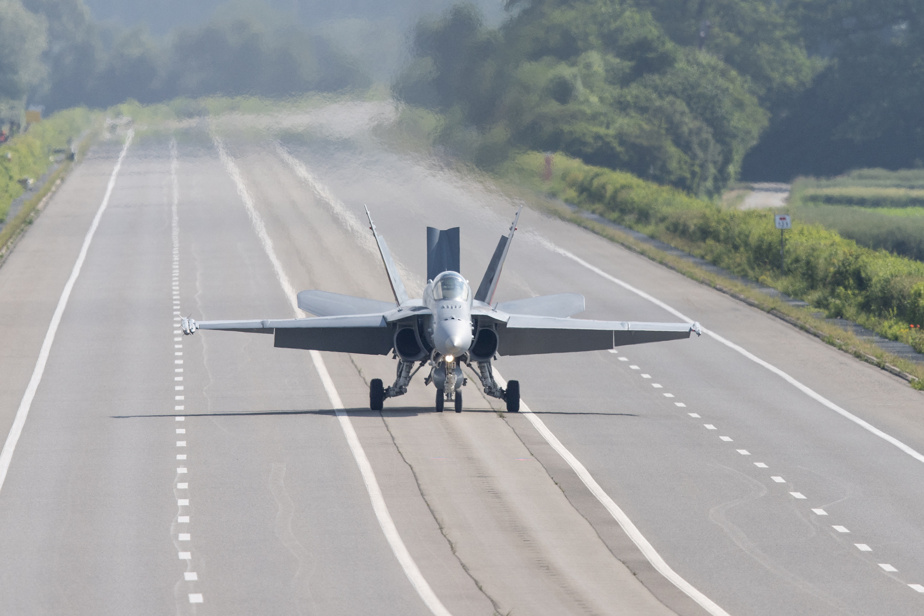(Payerne) The Swiss Air Force successfully carried out landings and takeoffs on a highway on Wednesday, a relatively common exercise within NATO, but which had not been attempted for decades in the Alpine country .
Departing from the Payerne military airfield, which is located right next to the portion of the highway that was cut off to traffic for the occasion, the first F/A-18 fighter bomber landed around 10 a.m. ( 4 a.m. Eastern Time) as planned and without a hitch.
Takeoffs two hours later, the same.
After the first landing, the condition of the runway was checked.
An F/A-18 weighs around fifteen tons without weapons and landing represents a significant shock.
Relatively small stones or debris can do considerable damage to jet engine turbine blades.
At 25 meters wide, a four-lane motorway like the A1 is also narrower than an airstrip and we must not forget to remove the central safety rail.
The three other aircraft of the same type landed successively on this highway which crosses the country from the French border in the west, near Geneva, to the border with Austria in the east.
Operations will resume in the afternoon with a landing-takeoff cycle.
With this “Alpha Uno” exercise, the Swiss Air Force wants to ensure its ability to operate in the event of conflict and damage to its bases.
It operates around thirty F/A-18s which are quickly reaching the end of their life.
To replace the F/A-18 fleet, the Swiss government chose the American F-35 – a latest generation stealth multirole fighter – to the detriment of the French Rafale in particular.
The way in which the choice was announced had considerably cooled relations between Paris and Bern before a warming last year and the state visit of President Emmanuel Macron.
Switzerland will buy 36 F-35 A for some 6 billion Swiss francs (more than 9 billion Canadian dollars).
Deliveries from Lockheed-Martin should begin in 2027 and last until 2030.
If the Swiss government claims that the plane was by far the best, at the lowest price of all the jets competing for the contract (Rafale, F/A-18 and Eurofighter), the countless technical difficulties and budget overruns of the program F-35 in the United States had prompted two Swiss parliamentary committees to launch an investigation into the choice of the aircraft, which ultimately did not fundamentally question the choice.




